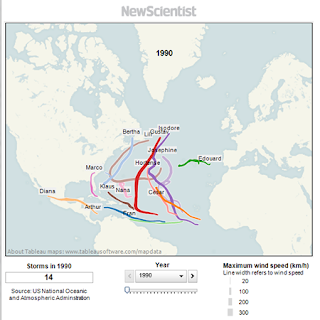Older Americans Month: May 2013
A meeting with the National Council of Senior Citizens resulted in President John F. Kennedy designating May 1963 as Senior Citizens Month, encouraging the nation to pay tribute to older people across the country. In 1980, President Jimmy Carter’s proclamation changed the name to Older Americans Month, a time to celebrate those 65 and older through ceremonies, events and public recognition.

(Click on visualization to interact with data)
Connecticut has 499,474 individuals who are 65 and older, comprising 14% of the state’s total population.

41.4 million
The number of people who were 65 and older in the United States on July 1, 2011, up from 40.3 million on April 1, 2010 (Census Day). In 2011, this group accounted for 13.3 percent of the total population.
Source: Population estimates <http://www.census.gov/popest/data/national/asrh/2011/index.html>
92.0 million
Projected population of people 65 and older in 2060. People in this age group would comprise just over one in five U.S. residents at that time. Of this number, 18.2 million would be 85 or older.
Source: Population projections <http://www.census.gov/population/projections/data/national/2012.html>
2.4 million
Projected number of baby boomers in 2060. At that time, the youngest baby boomers would be 96 years old.
Source: Population projections <http://www.census.gov/population/projections/data/national/2012.html>
2056
The year in which, for the first time, the population 65 and older would outnumber people younger than 18 in the U.S.
Source: Population projections <http://www.census.gov/population/projections/data/national/2012.html>
Nearly 17%
Projected percentage of the global population that would be 65 and older in 2050, up from 8 percent today. In 2005, Europe became the first major world region where the population 65 and older outnumbered those younger than 15. By 2050, it would be joined by Northern America (which includes Canada and the United States), Asia, Latin America and the Caribbean and Oceania (which includes Australia and New Zealand).
Source: International Data Base <http://www.census.gov/population/international/data/idb/informationGateway.php>
Income and Wealth
$33,118
The 2011 median income of households with householders 65 and older, not significantly different from the previous year.
Source: Income, Poverty, and Health Insurance Coverage in the United States: 2011
<http://www.census.gov/prod/2012pubs/p60-243.pdf>
8.7%
The percent of people 65 and older who were in poverty in 2011, statistically unchanged from 2010. There were 3.6 million seniors in poverty in 2011.
Source: Income, Poverty, and Health Insurance Coverage in the United States: 2011
<http://www.census.gov/prod/2012pubs/p60-243.pdf>
$170,128
Median net worth for householders 65 and older in 2010, down from $195,890 in 2005.
Source: Net Worth and Asset Ownership <http://www.census.gov/people/wealth/>
Serving Our Nation
9.2 million
Estimated number of people 65 and older who were veterans of the armed forces in 2011.
Source: 2011 American Community Survey <http://factfinder2.census.gov/bkmk/table/1.0/en/ACS/11_1YR/B21001>
Jobs
16.1%
The percentage of people 65 and older who were in the labor force in 2010, up from 12.1 percent in 1990. These older workers numbered 6.5 million in 2010, up from 3.8 million in 1990. By 2011, this rate had increased to 16.2 percent.
Source: Labor Force Participation and Work Status of People 65 and Older <http://www.census.gov/prod/2013pubs/acsbr11-09.pdf>
22.3%
The percentage of people 65 and older in Alaska in the labor force in 2011. Labor force participation rates for people 65 years and over ranged from 22.3 percent in Alaska to 12.5 percent in West Virginia.
Source: Labor Force Participation and Work Status of People 65 and Older <http://www.census.gov/prod/2013pubs/acsbr11-09.pdf>
44.3%
Among those 65 and older who worked in 2011, the percentage who worked full-time, year-round. Among states and equivalents, the District of Columbia had the highest rate, at 62.2 percent.
Source: Labor Force Participation and Work Status of People 65 and Older <http://www.census.gov/prod/2013pubs/acsbr11-09.pdf>
Education
81.1%
Proportion of people 65 and older in 2012 who had completed high school or higher education.
Source: Educational Attainment in the United States: 2012
<http://www.census.gov/hhes/socdemo/education/data/cps/2012/tables.html>
24.3%
Percentage of the population 65 and older in 2012 who had earned a bachelor’s degree or higher.
Source: Educational Attainment in the United States: 2012
<http://www.census.gov/hhes/socdemo/education/data/cps/2012/tables.html>
Marital Status and Living Arrangements
58%
Percentage of people 65 and older who were married in 2012.
Source: Families and Living Arrangements <http://www.census.gov/hhes/families/data/cps2012.html>
26%
Percentage of people 65 and older in 2012 who were widowed.
Source: Families and Living Arrangements <http://www.census.gov/hhes/families/data/cps2012.html>
Voting
70.3%
Percentage of citizens 65 and older reporting casting a ballot in the 2008 presidential election. Not statistically different from those 45 to 64 (69.2 percent), people 65 and older had the highest turnout rate of any age group.
Source: Voting and Registration in the Election of November 2008 (Table 2) <http://www.census.gov/prod/2010pubs/p20-562.pdf>
Homeownership
80.7%
Percentage of householders 65 and older who owned their homes as of fourth quarter 2012.
Source: Current Population Survey/Housing Vacancy Survey <http://www.census.gov/housing/hvs/>
Centenarians
53,364
The number of people 100 years old and older counted by the 2010 Census.
Source: Centenarians: 2010 <http://www.census.gov/prod/cen2010/reports/c2010sr-03.pdf>
20.7
For every 100 centenarian women, the number of centenarian men in 2010.
Source: Centenarians: 2010 <http://www.census.gov/prod/cen2010/reports/c2010sr-03.pdf>
43.5%
In 2010, percentage of centenarian men who lived with others in a household, the most common living arrangement for this group. For their female counterparts, the most common living arrangement was residing in a nursing home (35.2 percent).
Source: Centenarians: 2010 <http://www.census.gov/prod/cen2010/reports/c2010sr-03.pdf>
3.29
Number of centenarians per 10,000 people in North Dakota in 2010. North Dakota was the only state with more than three centenarians per 10,000 people.
Source: Centenarians: 2010 <http://www.census.gov/prod/cen2010/reports/c2010sr-03.pdf>
States and Counties
17.6%
Percentage of Florida’s population 65 and older in 2011 — which led all states.
Source: Population estimates <http://www.census.gov/popest/data/national/asrh/2011/index.html>
45.5%
Percentage of the population of Sumter County, Fla., that was 65 or older in 2011, which led all of the nation’s counties.
Source: Population estimates <http://www.census.gov/popest/data/national/asrh/2011/index.html>









